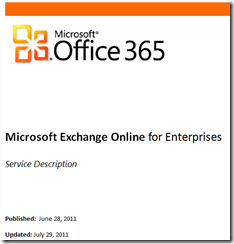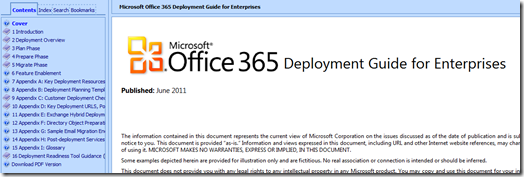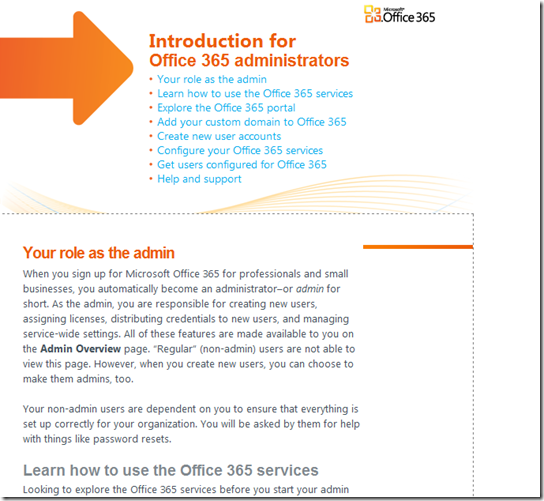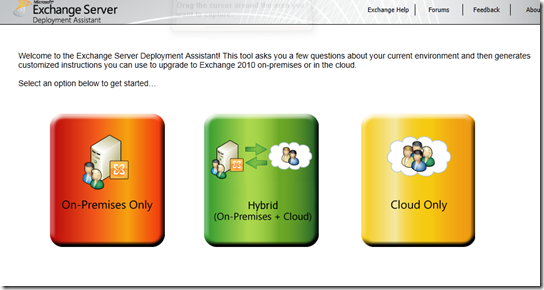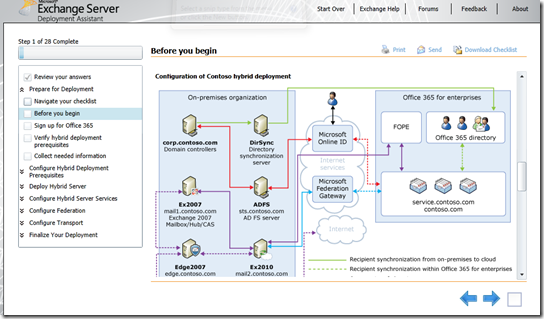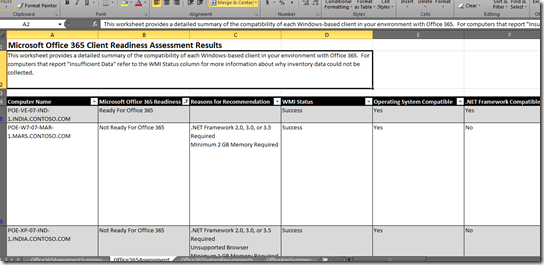What do I need to do to prepare for Office 365 for Education?
Welcome to our new blog! My name is Mark Garcia and I have been blogging on the Three UC Amigos blog for the past 3 years with some great customer reach. I have recently moved to the Office 365 for Education team as a Cloud Architect. I look forward to sharing some great technical information with you around Office 365 for Education.
My first post I figured should be around what do you need to do to prepare for Office 365 so I put together a list of steps:
Step 1: Understand what the Office 365 services provide using the Service Descriptions
There are some excellent detailed Office 365 service descriptions written and updated by the product team. Note: the Office 365 for Enterprises service description thus far can be leveraged for Office 365 for Education as there are no major deltas between the tenants with the exception of SharePoint Online.
If you want the technical nitty gritty details about the offering I would not continue on to step 2 without downloading and reading ALL of the service descriptions. I have found these answer a vast majority of your Office 365 functionality questions. Trust me - it will save you time hunting for functionality answers down the road if you pre-read all of these service descriptions as a first step.
Grab the Office 365 service descriptions here.
Step 2: Watch the Office 365 training videos
If you are going to administer Office 365 here are some excellent Office 365 administrator training videos I would add these as a must watch:
Office 365 Jump Start (01): Microsoft Office 365 Overview for IT Pros
Office 365 Jump Start (02): Deploying Clients for Office 365
Office 365 Jump Start (03): Microsoft Office 365 Administration & Automation Using Windows PowerShell™
Office 365 Jump Start (04): Microsoft Office 365 Identity and Access Solutions
Office 365 Jump Start (05): Microsoft Office 365 Directory Synchronization
Office 365 Jump Start (06): Exchange Online Overview for IT Pros
Office 365 Jump Start (07): Microsoft Exchange Online Administration
Office 365 Jump Start (08): Microsoft Staged Exchange Online Migration
Office 365 Jump Start (09): Hybrid Options with Exchange Server & Exchange Online
Office 365 Jump Start (10): Exchange Online Archiving & Compliance
Office 365 Jump Start (11): Lync Online Overview & Configuration for IT Pros
Office 365 Jump Start (12): SharePoint Online Overview
Office 365 Jump Start (13): SharePoint Online Administration
Office 365 Jump Start (14): SharePoint Online Extensibility & Customization
Office 365 Jump Start (15): Office 365 Deployment Overview
Step 3: Read the Office 365 deployment guide
To get a full understanding of all the Office 365 deployment steps there is excellent reference:
Visit the Deployment guide online here or download it here.
Step 4: Read the Introduction to Office 365 for Administrators Guide
This is a great site to learn about roles and administration of Office 365.
Visit it here.
Step 5: Run the Office 365 Readiness tool and remediate any issues
You need to determine if your on prem infrastructure is ready for Office 365. This Office 365 readiness tool can scan and analyze your infrastructure to determine potential issues BEFORE you being your deployment. It will check the following areas of your infrastructure:
- Domains
- Email domain discovery and number of users leveraging each domain
- User Identity and Account Provisioning
- Statistical information
- Active Directory schema and forest/domain functional data
- Trusts extract (checks for multi-forest constraints)
- Directory Synchronization
- Pre-requisite checks
- Attribute assessment
- Single sign on
- Attribute assessment
- Exchange Online
- Statistical information
- Public folder, public delegates, and proxyaddresses extract
- 3rd party and unified messaging proxyaddresses information
- Lync Online
- Statistical information
- SIP domains summary
- SharePoint Online
- User object count assessment
- Client and End User Experience
- Summary of domain joined machines for rich experience/SSO readiness
- Network
- Port analysis on certain Office 365 endpoints
- DNS records assessment
Grab the O365 Readiness tool here.
The output of this tool will more than likely point out objects or things that need to be remedied prior to your Office 365 deployment. I would not continue to Step 5 until this tool reports no major issues. In particular, pay attention to your Dirsync report as you will want to clean up any objects it says may be an issue when you configure Dirsync to sync your on prem AD objects to the cloud.
Step 5a (if running Windows Server 2008 R2 Active Directory): Run AD Best Practice Analyzer (BPA) tool and remediate any Active Directory issues
AD DS tool is installed by default when you are running Windows Server 2008 R2. This will help clean up any Active Directory issues prior to connecting to Office 365.
Step 6: Walk through the Exchange Deployment Assistant – if you have Exchange On premises or are going greenfield to the cloud run this tool
I recommend reviewing this site in detail to become familiar with the process and steps required:
This site offers Hybrid step by step for Exchange 2003/2007/2010 and Cloud Only step by step. Excellent references and information to help you:
You can also save the steps to PDF for offline reference. Excellent way to search the steps for reference. Go the Exchange DA site here.
Step 7: Determine if your workstations are ready for Office 365:
You can run this agentless MAP tool which will help you determine if your workstations are ready for Office 365 by providing you with reports based Office 365 minimum requirements. It will help you prior to your rollout get machines to the appropriate browser, memory, cpu, levels.
Grab the MAP toolkit here.
Another option here is to leverage System Center Configuration Manager (SCCM), if you have this deployed, to scan your workstations and compare it against the minimum Office 365 workstation requirements here.
Other helpful sites to help you prepare for deployment:
Office 365 Community Wiki – get Office 365 FAQs and help information
Office 365 Transition center – grab great information for end users, etc.
Office 365 E-book – nice free e-book to read about the offering
Office 365 Trust Center – review security and compliance information about Office 365
Office 365 Setup accelerator – nice custom setup guide
This is our first post to learning and getting prepared for Office 365. Our team will post many more technical articles we learn that help customers or maybe a technical hurdle we overcame with a customer that may help you.
